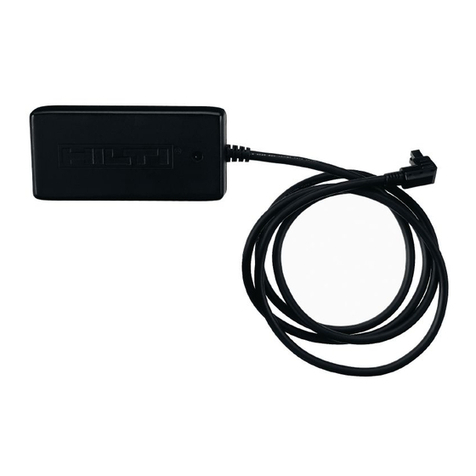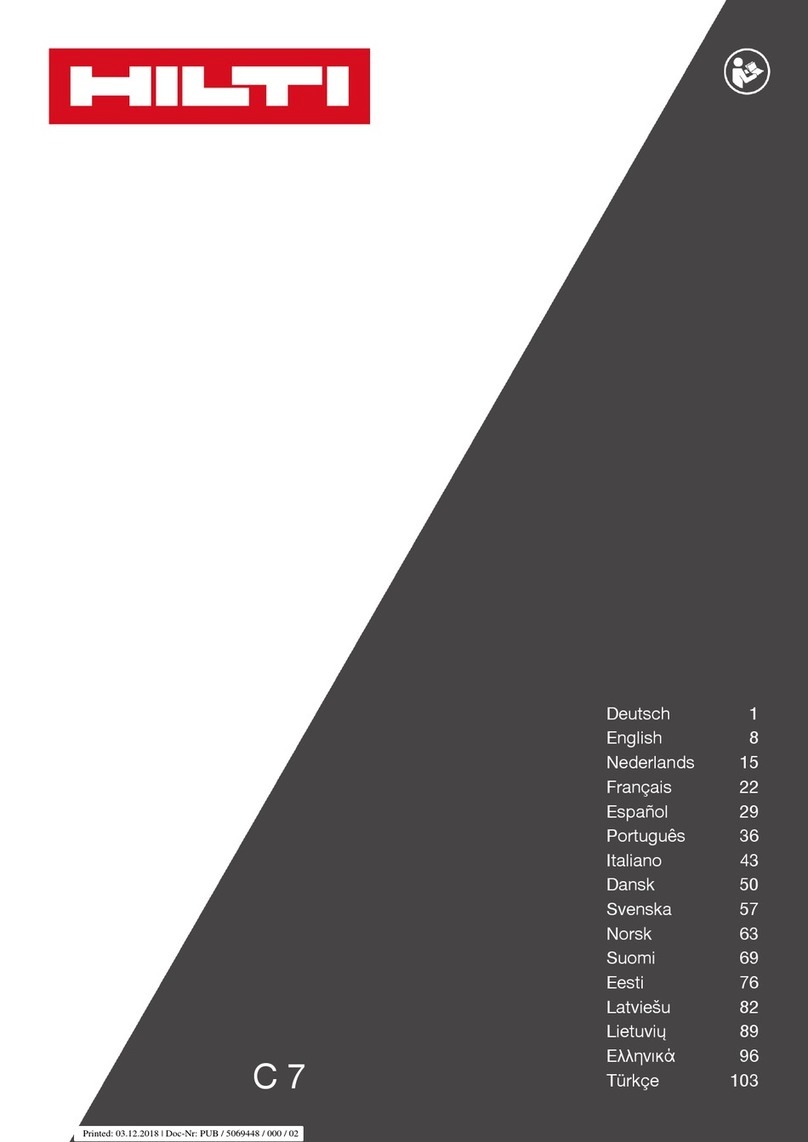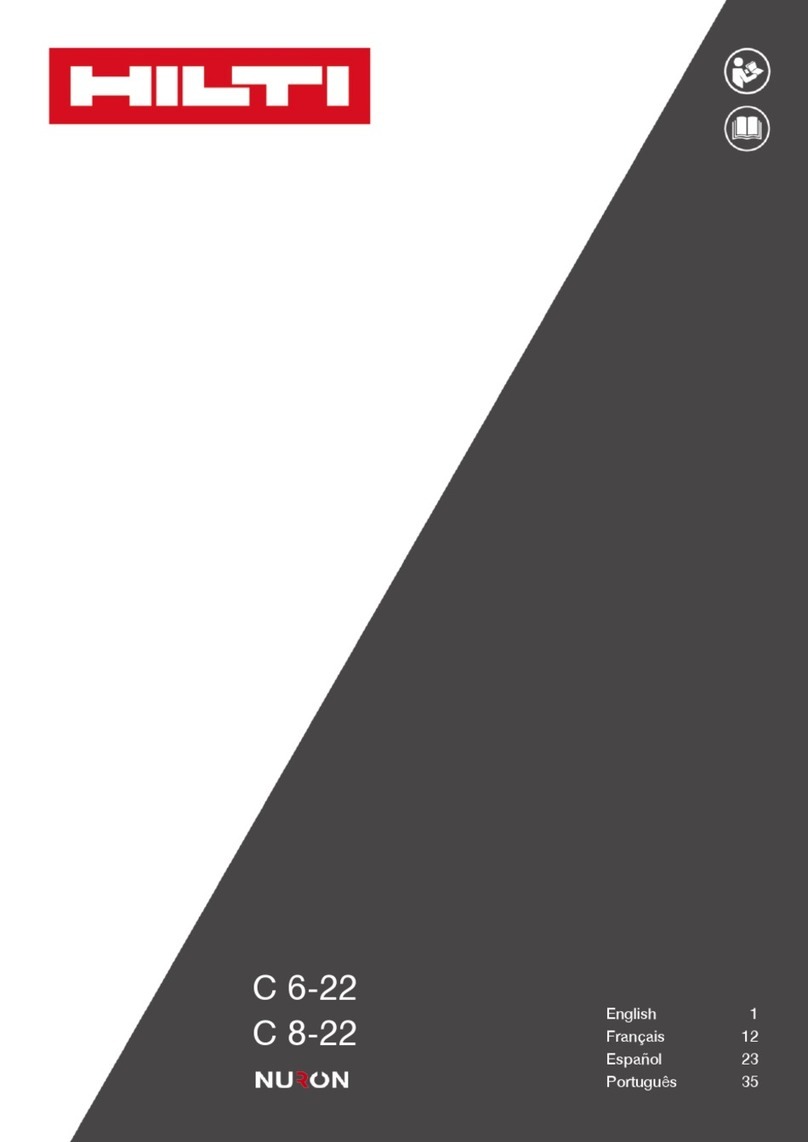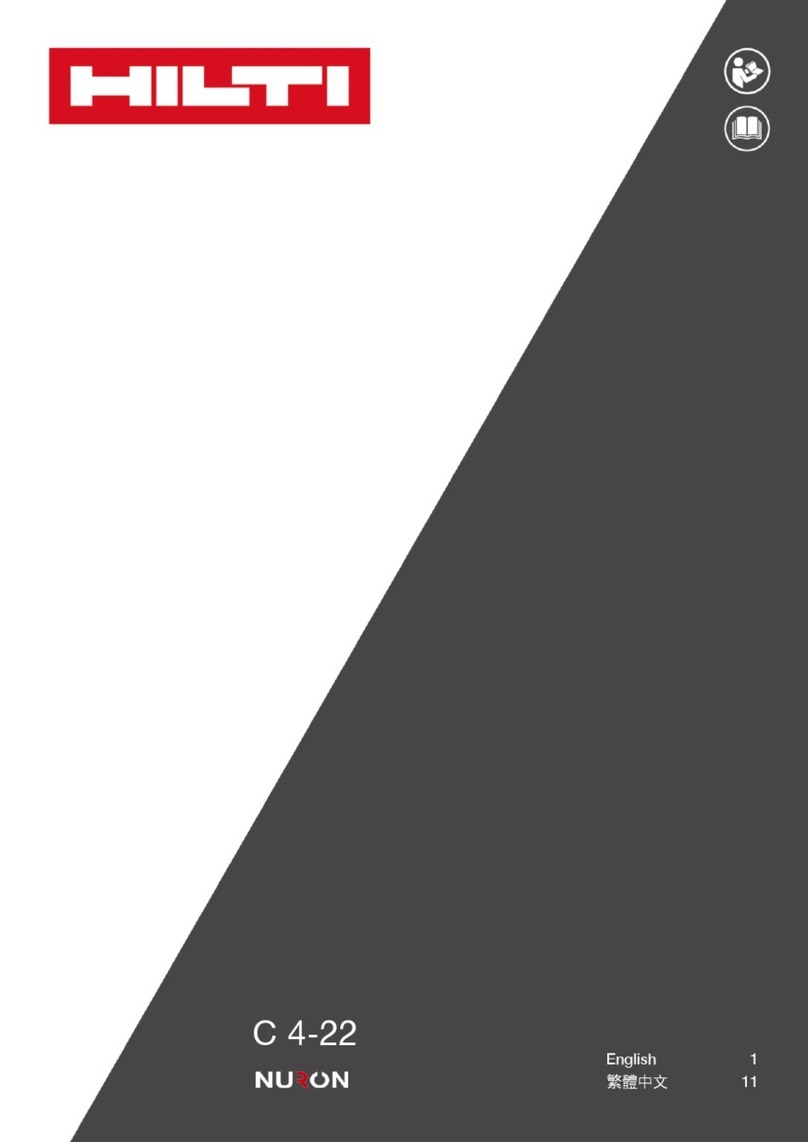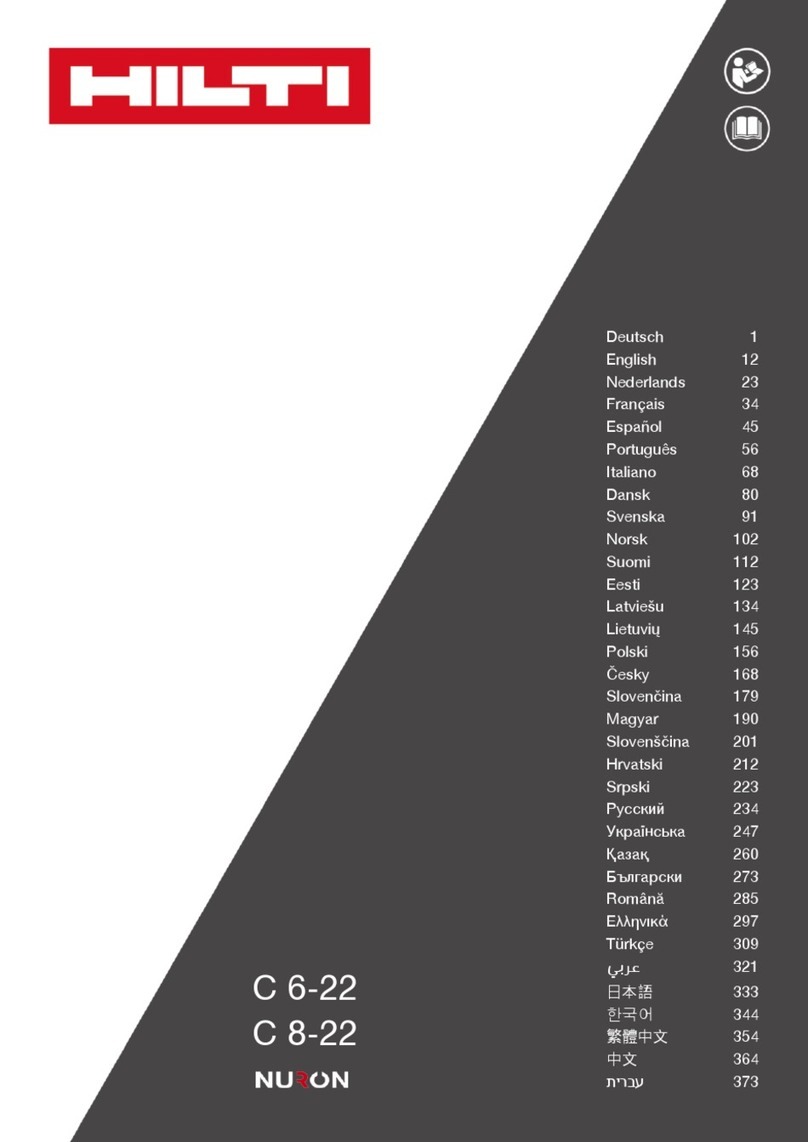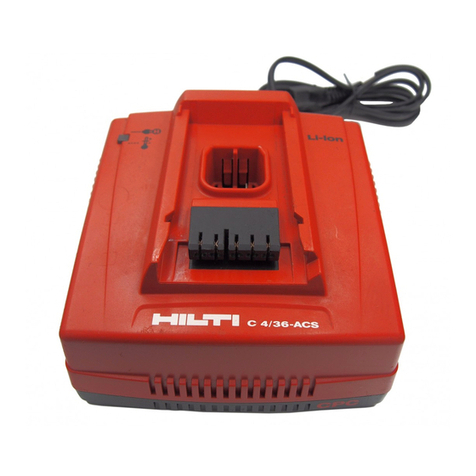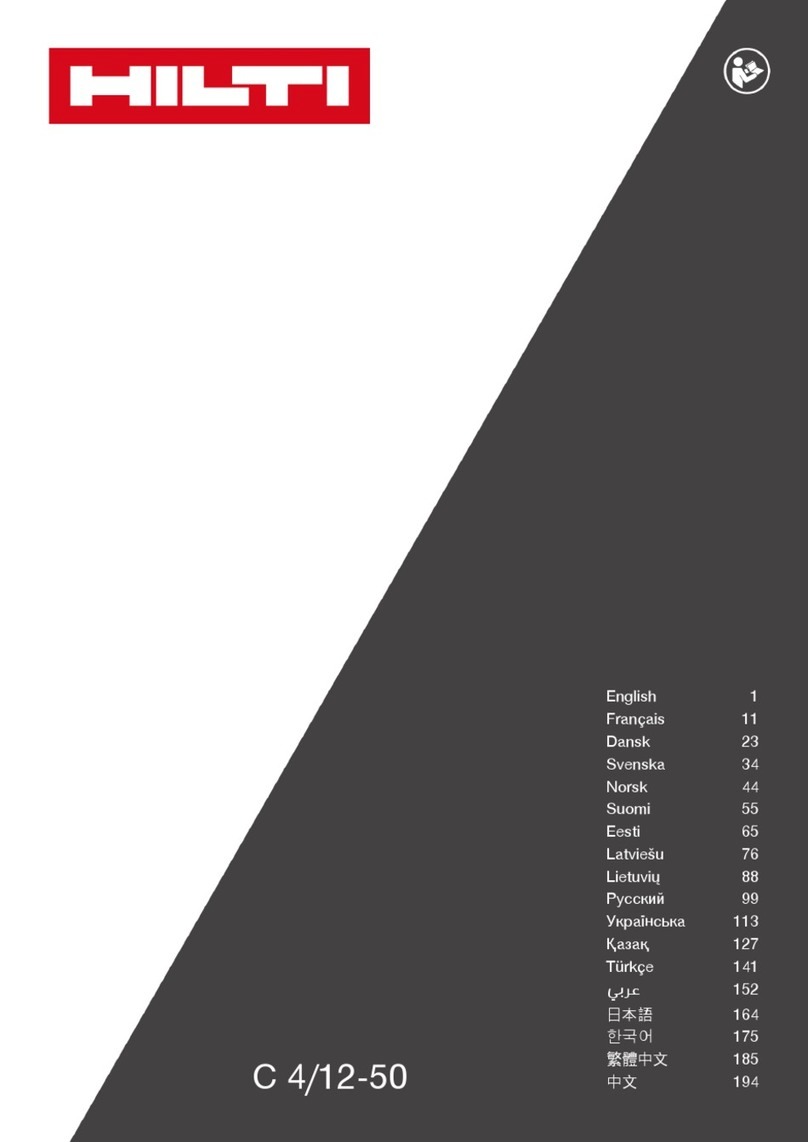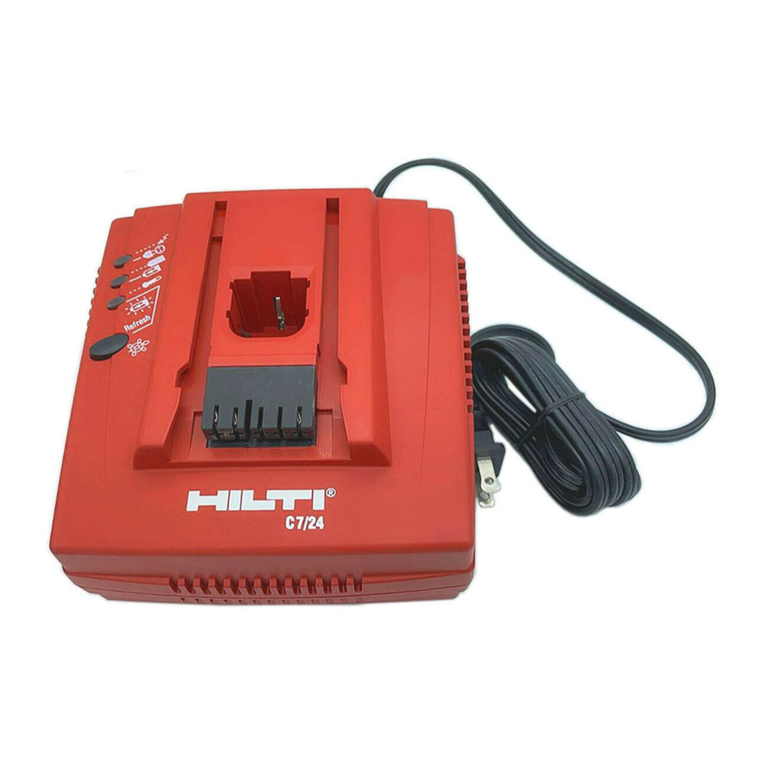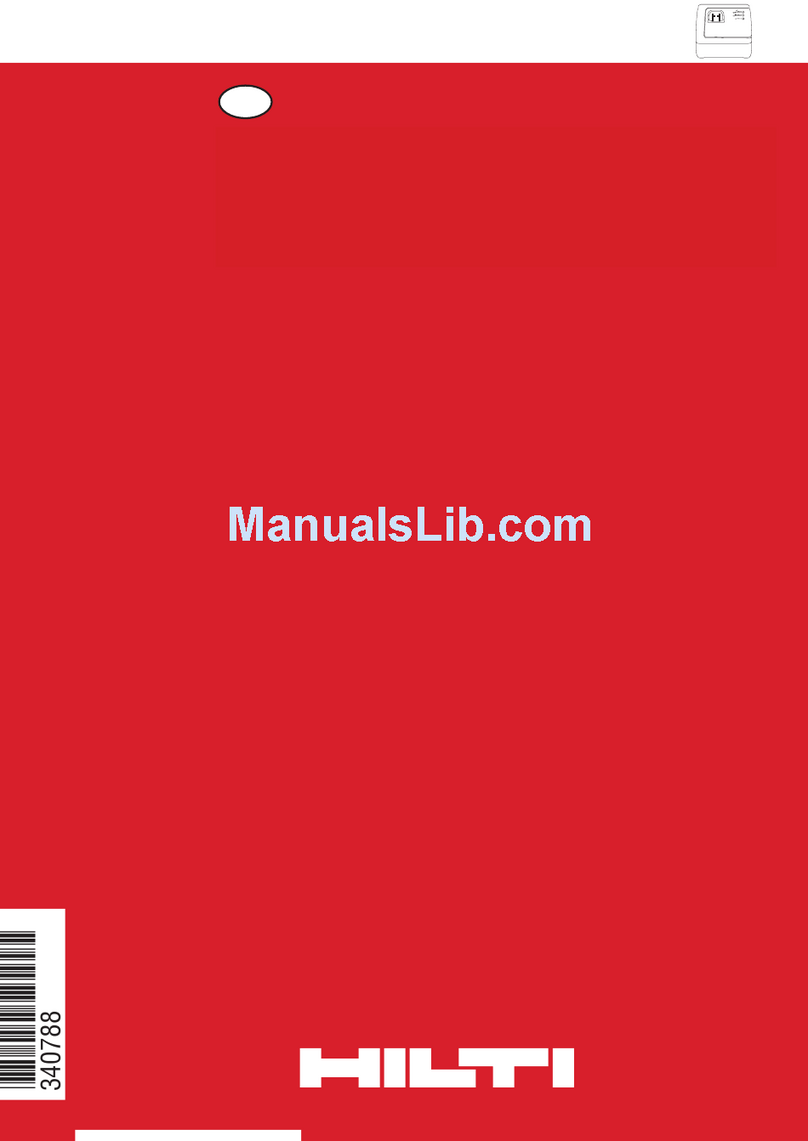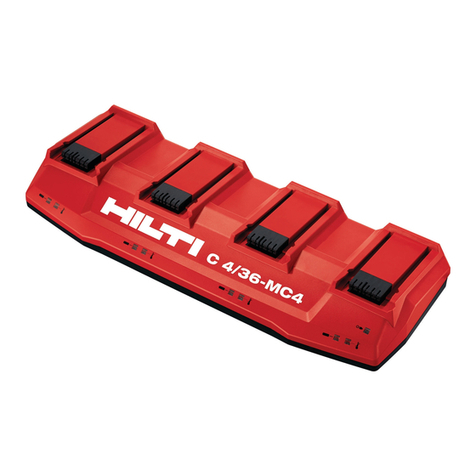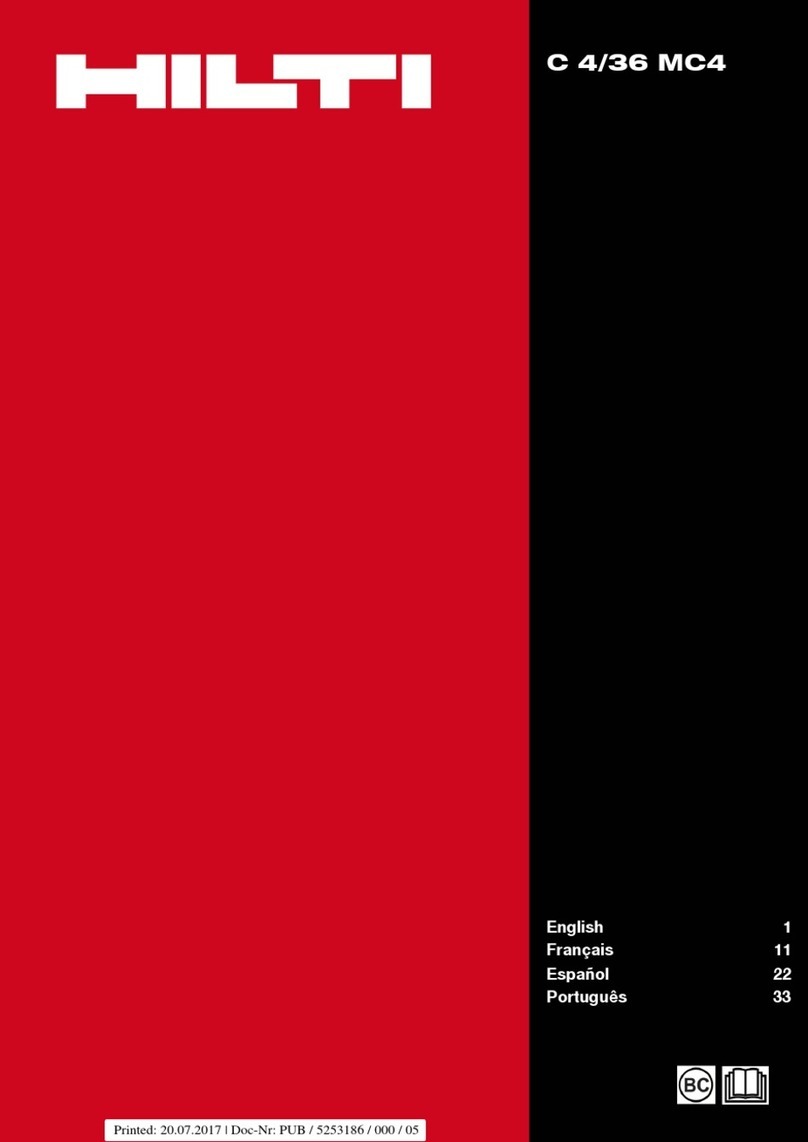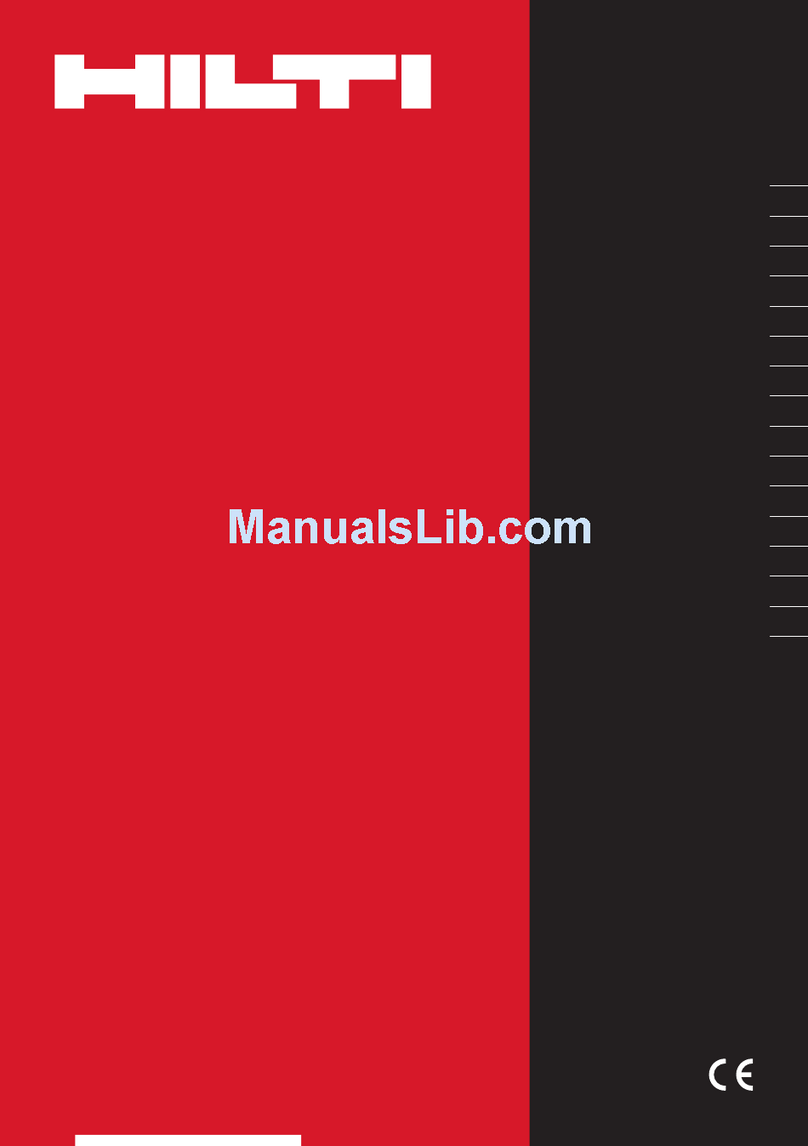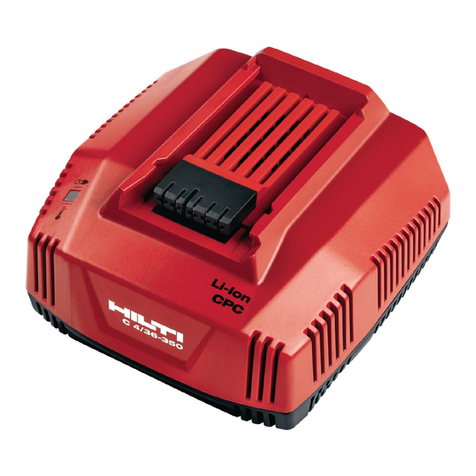English 3
▶Keep your work area clean and well lit. Cluttered or poorly lit work areas invite accidents.
▶Do not operate the charger in explosive atmospheres, such as in the presence of flammable liquids,
gases or dust. Chargers can cause sparks which can ignite dust, fumes or vapors.
▶Keep children and other persons away from the area while the charger is in use.
▶Always stow the battery charger securely to prevent it sliding about in a vehicle during transport.
Electrical safety
▶The plug on the supply cord of the appliance must match the outlet. Do not change the plug in any way.
Unmodified plugs and matching power outlets reduce the risk of electric shock.
▶Avoid body contact with earthed or grounded surfaces such as pipes, radiators, cookers, stoves and
refrigerators. There is an increased risk of electric shock if your body is grounded.
▶Do not abuse the cord. Never use the cord to carry or hang up the power tool or to pull the plug out of
the power outlet. Keep the cord well away from heat, oil, sharp edges and moving parts. Damaged or
twisted supply cords increase the risk of electric shock.
▶Use the battery charger only inside dry rooms. Water entering an electric appliance will increase the risk
of electric shock.
▶Do not touch the supply cord or extension cord if it is damaged while you are working. Disconnect the
supply cord plug from the power outlet. Damaged supply cords and extension cords present a risk of
electric shock.
▶Never operate the appliance when it is dirty or wet. Dust (especially dust from conductive materials) or
dampness on the surface of the appliance can, under unfavorable conditions, lead to electric shock.
Have dirtied or dusty appliances checked at regular intervals by Hilti Service, especially if they are used
frequently for working on conductive materials.
Personal safety
▶Do not wear jewelry such as rings or chains. Jewelry could cause a short circuit resulting in personal
injury in the form of burns.
▶Take care to ensure that the charger stands in a steady, secure position. A falling battery or charger can
endanger you and/or others.
▶Avoid touching the contacts.
▶Batteries that have reached the end of their life must be disposed of safely and correctly to avoid
environmental pollution.
▶Children are not permitted to play with the appliance and must be instructed accordingly.
Battery charger use and care
▶Use the charger only to charge the specified Hilti batteries.
▶Maintain the appliance carefully. Check to ensure that no parts are broken or damaged in such a way
that the appliance might no longer function correctly. Have damaged parts repaired before using the
appliance.
▶Use chargers and the corresponding batteries in accordance with these instructions and as specified for
this particular model. Use of chargers for applications other than those intended can result in hazardous
situations.
▶Recharge batteries only with the chargers recommended by the manufacturer. A charger that is suitable
for a certain type of battery can be a fire hazard if used with other batteries.
▶When not in use, keep the battery and the charger away from paper clips, coins, keys, nails, screws
and other small metal objects that could cause a short circuit at the battery terminals or the charging
contacts. A short circuit between the battery terminals or charging contacts can cause burn injuries and
result in fire.
▶Misuse can result in liquid escaping from the battery. Avoid contact with the liquid. If contact accidentally
occurs, rinse off with water. If the liquid contacts the eyes, also seek medical attention. Liquid escaping
from the battery can cause skin irritation or burns.
▶Make sure that the batteries suffer no mechanical damage.
▶Do not attempt to charge or continue to use damaged batteries (e.g. batteries with cracks, broken parts,
bent or pushed-in and/or pulled-out contacts).
Service
▶Have the appliance serviced by a qualified specialist using only genuine Hilti spare parts. The safety of
the appliance can thus be maintained.
Printed: 03.03.2017 | Doc-Nr: PUB / 5296538 / 000 / 01
